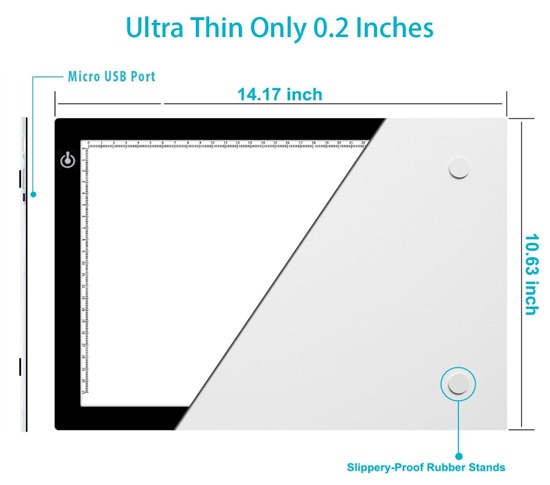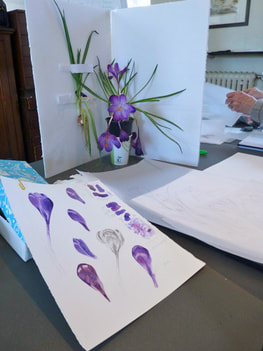- Home
- NEWS
-
HISTORY
- What is Botanical Art?
- What is Botanical Illustration?
- Botanical Art History Books >
- Herbals
- Florilegia and Flora
- Patrons of Botanical Art >
- Past Masters - Botanical Art and Illustration >
- Famous Asian Botanical Artists (600-1900)
- 20th & 21st Century Botanical Artists >
- Botanical Photographers
- Botanical and Herbal Art Online
-
ARTISTS
- Botanical Artists in the UK
- Botanical Artists in North America
- Botanical Artists in Europe
- Botanical Artists in Australia and New Zealand
- Botanical Artists in Asia
- Botanical Artists in Africa
- Botanical Artists in Latin America
- Botanical Printmakers, Photographers, Sculptors et al
- The Jill Smythies Award
- Botanical Artists on Facebook
- Botanical Art Blogs
-
Exhibitions
- Calls for Entries - OPEN exhibitions
- Online Exhibitions >
- RHS Botanical Art & Photography Shows >
- The Shirley Sherwood Gallery of Botanical Art >
- Hunt International Exhibition of Botanical Art & Illustration
-
UK
>
- North America >
- Europe >
- Australasia >
- Asia >
- Africa
- ARCHIVE: World Wide Exhibition of Botanical Art 2018
-
Education
- NEW BOOKS about Botanical Art and Illustration >
-
Best Botanical Art Instruction Books
>
- Tips and Techniques >
- Botanical Art Video Tips >
- Online Botanical Art Instruction >
- International Directory: Botanical Art Teachers
- International Directory of Botanical Art Courses >
- Artist Residencies, Scholarships and Bursaries
- Diplomas and Certificates >
- Distance Learning Courses
- Talks, Lectures & Tours
- Botanical Education on Facebook
- Materials
- Groups
-
Botany
- Why botany matters to artists
- Botany Books for artists >
- Scientific botanical illustration
- Plant Forms and Anatomy
- Plant Evolution and Taxonomy
- Plant Names and Botanical Latin
- Botanical Dictionaries
- How to Identify Plants
- Recording a Plant / Sketchbooks >
- Botanic Gardens & Herbaria >
- Blogs about Plants and Flowers
- Contact
|
This page is about processes related to preparation.
These include
This page is NEW and is currently being developed.
|
On separate pages you can find information, tips and recommended books about
|
Burnishing the paper
In the quest for a very smooth paper and total control of paint, it can be very educational to learn about the traditional methods used for burnishing paper.
Burnishing is a process by which the surface of the paper is rendered less fibrous and spongy in appearance. This is accomplished by means of pressure applied by rubbing sized paper. This can be accomplished by machines, but was historically done by hand. Dry sheets of sized paper are placed on a flat surface and pressure is applied by rubbing a smooth, hard object across the surface of the paper. Typical objects that are used for burnishing include agate, glass, bone, and horn. Burnished paper is typically used for manuscripts or stationary work, where bleeding inks are a concern. |
I use an agate burnisher, after the main tonal washes and before I add fine details. I only burnish the painted areas, not the whole page. This suits my technique, which is lots of washes and detail dry-brushed on afterwards. |
|
Burnishing is a traditional method for preparing paper for calligraphy. A smooth polished non-absorbent surface allows writing implements and ink to move smoothly across the paper. This enables the creation of a smooth line of ink that flows across the support. This can be achieved through burnishing.
Burnishing is also a technique used by watercolour painters who want a very smooth plate surface on which to paint. Burnishing works by compressing the fibres of paper. In paper manufacturers this happens when the paper fibre is run between rollers. The effects of burnishing are threefold. The paper becomes:
Tools used for burnishing include anything very hard, without edges and completely smooth. Examples include:
|
A video about Glazing, Burnishing and Polishing Paper through time - a lecture given by Jane Colbourne, Conservation Department, Northumbria University. It's nearly an hour long and is about the history of and context for methods used for preparing paper in the past.
REFERENCE:
|
|
Professional Glass Muller
Agates are fine if you are burnishing a small area. However if you want to burnish a larger area, this glass muller measures 7cm across and also provides an ergonomic grip. These two features help make the whole process easier and speedier. It's designed for grinding pigments but works just as well smoothing paper. |
Weight 360g
|
Prepare to transfer your image - from studies to final art paper
I know the thought of transferring seems an utter waste of time, but think of it as another chance to check the drawing, go at the process with a peaceful heart, do it slowly, thoughtfully, and NEVER lose sight of what the image is.
Katie Lee
Getting a study from initial paper to fine art paper is a challenge for many artists.
|
Transferring the Image
|
Tracing paper can be used for:
REFERENCE: Transferring drawings
|
BELOW are videos and more explanations about how to trace a drawing on to paper for painting.
|
Tracedown Paper
This is very good quality wax free tracing paper. The sort of product where paying more really pays off in practice. You can do several tracings from one sheet. The tracing is also easily erased without smudging or making a mess of the paper. |
This is the graphite version but you can also get it in assorted colours if you prefer.
Recommended: rates and average of 4.7 out of 5 stars on Amazon UK BUY NOW Tracedown A3 Graphite - Pack of 5 Sheets
|
How to transfer a drawing. One of the things that nobody ever told you!
|
Dianne Sutherland provides a quick guide to transferring a drawing to paper from you preparatory study.
This is one of those things that we often assume that everybody knows! but it's not always the case. |
|
|
This is the video which goes with Sandrine Maugy's written tutorial - How to transfer a drawing - about transferring a drawing using Tracedown.
|
|
How to Create Transfer Paper for Artists
|
This is a How-to video by Mindy Lighthipe on transferring drawings and sketches onto watercolor paper. Learn to make your own transfer paper with step by step instructions.
The subject matter is natural history rather than botanical art but the principles are the same. Plus comments on commercially available transfer papers |
|
Tracing and transferring images to art paper
|
How to trace an image to art paper - without creating indentations by Gaynor Dickeson
|
|
Tracing using a Lightbox
Many artists use a lightbox for ease of tracing.
The major change in recent years is that boxes have got a lot slimmer and are now more like iPads in terms of thickness.
The major change in recent years is that boxes have got a lot slimmer and are now more like iPads in terms of thickness.
|
Huion® Tracing Light Box L4S
17.7 Inches A4 Size LED Adjustable Light Lightboxes of old used to be quite chunky affairs making them difficult to find space for. Now they are powered by LED lighting and have become super slim - making them much easier to accommodate. This particular lightbox has the following features:
|
Dimensions: 36 x 0.5 x 27 cm
BUY NOW Huion L4S LED Light Box
|
Resources about Botanical Art and For Botanical Artists
ABOUT: About the Author | Contact | Testimonials | Privacy Policy COPYRIGHT 2015-22: Katherine Tyrrell all rights reserved.
|
NEWS
News Blog about artists, awards, exhibitions etc. |
EXHIBITIONS
- Calls for Entries - Exhibitions around the world - Online Exhibitions - RHS Exhibitions - Hunt Exhibitions ORGANISATIONS
- Botanical Art Societies - national / regional / local - Florilegium & Groups - Botanical Art Groups on Facebook |
EDUCATION
- Tips and Techniques - Best Botanical Art Instruction Books - Directory of Teachers - Directory of Courses - Online Botanical Art Courses - Diplomas and Certificates - Talks, Lectures and Tours ART MATERIALS (Paper / Vellum) BOTANY FOR ARTISTS - Scientific Botanical Illustration - Best Botany Books for Artists - Plant Names & Botanical Latin BOTANIC GARDENS & Herbaria |
FEEDBACK
Please send me . - news to share - info. about exhibitions - any suggestions for what you'd like to see on this website ADVERTISE Contact me if you'd like to promote workshops and courses on this site. AFFILIATION This website is free to you but not for me! (See Affiliate Income below) |
|
Cookies, Personal Data & Privacy tells you how this site relates to and impacts on you and your privacy - and your choices.
Product & company names may be trademarks of their respective owners |
About Affiliate Income: This website has been created to share information not to make a profit. I am an Amazon Associate and earn from qualifying purchases (e.g. books from Amazon) which helps offset costs associated with maintaining this very large website.
|
- Home
- NEWS
-
HISTORY
- What is Botanical Art?
- What is Botanical Illustration?
- Botanical Art History Books >
- Herbals
- Florilegia and Flora
- Patrons of Botanical Art >
- Past Masters - Botanical Art and Illustration >
- Famous Asian Botanical Artists (600-1900)
- 20th & 21st Century Botanical Artists >
- Botanical Photographers
- Botanical and Herbal Art Online
-
ARTISTS
- Botanical Artists in the UK
- Botanical Artists in North America
- Botanical Artists in Europe
- Botanical Artists in Australia and New Zealand
- Botanical Artists in Asia
- Botanical Artists in Africa
- Botanical Artists in Latin America
- Botanical Printmakers, Photographers, Sculptors et al
- The Jill Smythies Award
- Botanical Artists on Facebook
- Botanical Art Blogs
-
Exhibitions
- Calls for Entries - OPEN exhibitions
- Online Exhibitions >
- RHS Botanical Art & Photography Shows >
- The Shirley Sherwood Gallery of Botanical Art >
- Hunt International Exhibition of Botanical Art & Illustration
-
UK
>
- North America >
- Europe >
- Australasia >
- Asia >
- Africa
- ARCHIVE: World Wide Exhibition of Botanical Art 2018
-
Education
- NEW BOOKS about Botanical Art and Illustration >
-
Best Botanical Art Instruction Books
>
- Tips and Techniques >
- Botanical Art Video Tips >
- Online Botanical Art Instruction >
- International Directory: Botanical Art Teachers
- International Directory of Botanical Art Courses >
- Artist Residencies, Scholarships and Bursaries
- Diplomas and Certificates >
- Distance Learning Courses
- Talks, Lectures & Tours
- Botanical Education on Facebook
- Materials
- Groups
-
Botany
- Why botany matters to artists
- Botany Books for artists >
- Scientific botanical illustration
- Plant Forms and Anatomy
- Plant Evolution and Taxonomy
- Plant Names and Botanical Latin
- Botanical Dictionaries
- How to Identify Plants
- Recording a Plant / Sketchbooks >
- Botanic Gardens & Herbaria >
- Blogs about Plants and Flowers
- Contact



